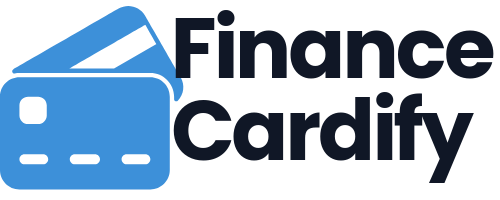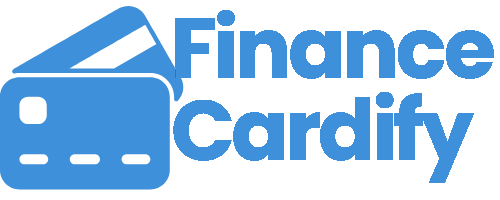In life, borrowing money is often a necessity, whether you’re securing a mortgage for your dream home, financing a car, consolidating high-interest debt, or seeking a personal loan for a major expense. Whatever the reason, the cost of that money—the interest rate—will significantly impact your financial future. A single percentage point difference can translate into thousands of dollars saved or spent over the life of a loan.
Securing the best loan rates isn’t a matter of luck; it’s an art that combines preparation, savvy comparison shopping, and a deep understanding of what lenders look for. This detailed guide will walk you through the essential steps and strategies to master the art of borrowing and unlock the most favorable terms available to you.
Part 1: The Borrower’s Blueprint—Optimizing Your Financial Profile
Before you even approach a lender, the most critical work is done at home. Lenders assess risk, and the better your financial profile looks, the lower the risk you represent, and the lower the interest rate they are willing to offer.
1. Master Your Credit Score and Report
Your credit score is the single most important factor determining your interest rate. It’s a numerical representation of your creditworthiness, with scores ranging from 300 to 850 (FICO and VantageScore are the most common models). The highest rates—the “prime rates”—are reserved for borrowers with scores typically in the 740+ range, with the very best reserved for those above 800.
Actionable Steps to Boost Your Score:
- Payment History is King (35% of FICO): Always pay all your bills on time. Even a single 30-day late payment can severely damage your score. Set up automatic payments to ensure consistency.
- Keep Utilization Low (30% of FICO): Your Credit Utilization Ratio (CUR) is your total credit card balances divided by your total credit card limits. Aim to keep this number below 30%, but ideally under 10%, to signal responsible credit use. Pay down revolving debt before applying for a major loan.
- Check and Correct Your Reports: Obtain copies of your credit reports from all three major bureaus (Experian, TransUnion, Equifax) and dispute any errors immediately. Incorrect information can drag your score down for no valid reason.
2. Sharpen Your Debt-to-Income Ratio (DTI)
Lenders use your Debt-to-Income Ratio (DTI) to measure your ability to manage monthly payments and repay the new loan. It’s calculated by dividing your total monthly debt payments (including the proposed new loan payment) by your gross monthly income.
- A DTI below 36% is often the benchmark for the best rates, though some loan programs allow up to 43% or even 50%.
- How to improve DTI: Increase your income, if possible, or, more realistically, pay off existing debts. Focus on eliminating smaller, high-interest debts like credit card balances or personal loans.
3. Build Your Financial Documentation
Gather all necessary documents before you apply. Being able to provide a complete, well-organized file quickly reduces friction and can speed up the approval process.
- Income Proof: Pay stubs, W-2s, tax returns (typically the last two years).
- Assets: Bank statements, investment account statements.
- Identification: Government-issued ID, proof of address.
Part 2: The Strategist’s Guide—Loan Structuring and Type
The interest rate you receive is also heavily influenced by the nature and structure of the loan itself. Understanding your options allows you to negotiate from a position of strength.
4. Choose the Right Loan Term
The length of time you take to repay the loan (loan term) has a direct correlation with the interest rate.
- Shorter Terms: A 15-year mortgage typically has a lower interest rate than a 30-year mortgage. Lenders view shorter terms as less risky because they get their money back faster. While your monthly payment will be higher, your total interest paid over the life of the loan will be substantially lower.
- Longer Terms: These offer lower monthly payments, which can be crucial for budget management, but come with a higher interest rate and significantly greater total interest costs.
Choose the shortest term you can comfortably afford, balancing the interest savings against your monthly budget.
5. Secured vs. Unsecured Loans
The presence of collateral is another key differentiator.
- Secured Loans (e.g., mortgages, auto loans): These loans are backed by an asset (your home or car). If you default, the lender can seize the asset to recoup their loss. Because the lender’s risk is lower, secured loans almost always have lower interest rates than unsecured loans.
- Unsecured Loans (e.g., personal loans, credit cards): These are backed only by your promise to repay and your credit history. The higher risk to the lender means higher interest rates.
6. Consider Fixed vs. Adjustable Rates
When borrowing, you’ll generally choose between two rate structures:
- Fixed-Rate: The interest rate remains the same for the entire life of the loan. This offers stability and protection if market rates rise, but the initial rate may be slightly higher than an adjustable rate. Best for long-term predictability.
- Adjustable-Rate (ARM): The rate is fixed for an initial period (e.g., 5/1 ARM means fixed for 5 years, then adjusts annually), after which it can fluctuate based on market indices. They often start with a lower introductory rate, but carry the risk of higher payments later. Best if you plan to pay off or refinance the loan before the fixed period ends.
Part 3: The Market Navigator—Comparison and Negotiation
Once your financial profile is optimized, the final, crucial step is to navigate the market and leverage competition.
7. Shop Around Aggressively
Never accept the first offer. The difference in rates between lenders—banks, credit unions, online lenders, and mortgage brokers—can be significant, even for the same borrower profile.
- Compare Multiple Lenders: Get quotes from at least three different types of lenders. This gives you a clear baseline for the best available rates.
- Use Prequalification/Pre-Approval: Most lenders offer a pre-qualification process using a soft credit check, which does not harm your credit score. Use this to compare estimated rates and fees before committing to a formal application.
- Bundle Applications: When applying for a mortgage or auto loan, submit all your applications within a short shopping window (typically 14 to 45 days, depending on the credit scoring model). All hard inquiries for the same type of loan within this window will be counted as a single inquiry, minimizing the negative impact on your score.
8. Negotiate for Rate Discounts and “Buy Downs”
The quoted rate is often just a starting point. Don’t be afraid to ask for better terms.
- Lender Discounts: Many lenders offer small rate reductions (e.g., 0.25%) for setting up automatic payments from an account with them. Ask about any “relationship discounts” if you already bank with them.
- Paying Points (Mortgage): On a mortgage, you can often “buy down” your interest rate by paying discount points—a fee paid upfront to the lender (1 point typically costs 1% of the loan amount and can reduce the rate by 0.25%). Calculate the “break-even point”—how long it takes for the monthly interest savings to exceed the upfront cost—to determine if this is a worthwhile strategy for your long-term plans.
9. Increase Your Down Payment
For secured loans like mortgages and auto loans, a larger down payment immediately reduces the principal amount borrowed and lowers the lender’s Loan-to-Value (LTV) ratio. A lower LTV indicates less risk, which directly translates to a lower interest rate. For mortgages, putting down at least 20% also eliminates the need for expensive Private Mortgage Insurance (PMI), saving you even more.
Conclusion: The Final Verdict
Mastering The Art of Borrowing is about proactive financial management. It’s not just about finding a lender; it’s about making yourself the most attractive borrower possible. By meticulously managing your credit score, optimizing your DTI, selecting the ideal loan structure, and engaging in aggressive comparison shopping and negotiation, you place yourself in a powerful position. The small investment of time you put into preparation will yield dividends that save you significant money and enhance your financial stability for years to come.





